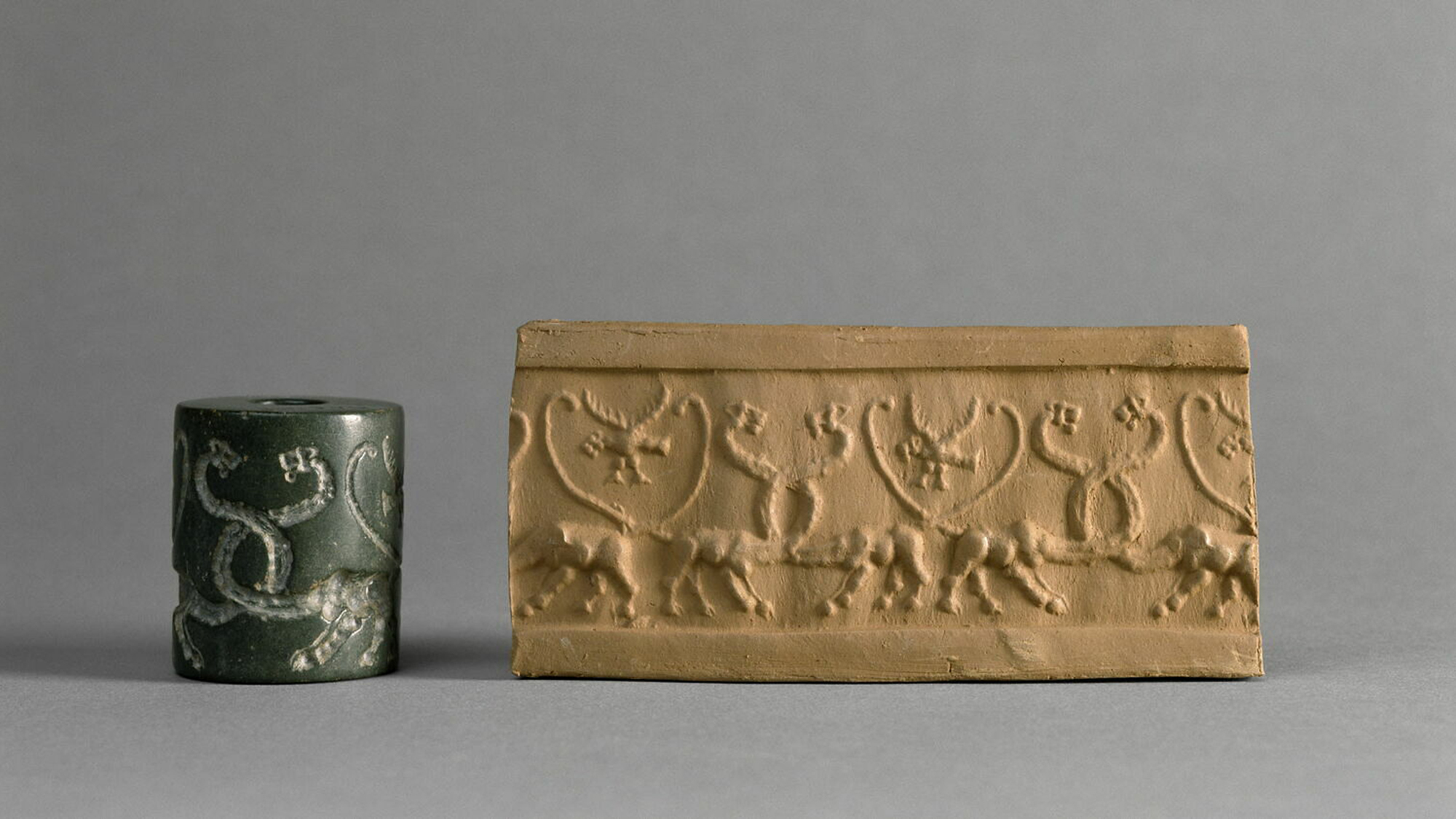The origins of writing in ancient Mesopotamia and beyond may rest on a group of cylindrical seals. A team of archeologists from the University of Bologna in Italy has identified a series of correlations between the designs engraved on some roughly 6,000-year-old cylinders and other signs of the proto-cuneiform script that emerged in present day Iraq. The findings are detailed in a study published November 5 in the journal Antiquity.
Making the jump from using symbols to writing is considered a major development in human cognitive abilities. Tracing how and when it began can reveal more about daily life in ancient societies and how our species evolved.
[Related: Ancient Mesopotamian texts show when and why humans first kissed.]
“The invention of writing marks the transition between prehistory and history, and the findings of this study bridge this divide by illustrating how some late prehistoric images were incorporated into one of the earliest invented writing systems,” study co-author and University of Bologna archaeologist Silvia Ferrara said in a statement.”
The scrolls were found in what was once the city of Uruk, tucked between the Tigris and Euphrates river in present day Iraq. Uruk was one of the first cities to emerge in Mesopotamia and was an important hub throughout the fourth millennium BCE. It had a great deal of influence over a large region from present day southwestern Iran to modern southeastern Turkey.
Cylinder seals that were created in the Uruk region were generally made of stone and engraved with a series of designs. The cylinders were then rolled onto clay tablets, an impression of the design stamped onto the clay like a cookie press. Beginning around the mid-fourth millennium BCE, cylinder seals like these were used as part of an accounting system. The system tracked the production, storage, and transport of various consumer goods in and out of the city, particularly agricultural and textile products.
Proto-cuneiform is among the earliest known forms of human writing and appeared within this need to keep track of trade. The archaic form of writing consists of hundreds of pictographic signs. Over half of these images remain undeciphered to this day. Similar to the cylinder seals, proto-cuneiform was also used for accounting. Proto-cuneiform has primarily been documented in southern Iraq.
“The close relationship between ancient sealing and the invention of writing in southwest Asia has long been recognised, but the relationship between specific seal images and sign shapes has hardly been explored,” said Ferrara. “This was our starting question: did seal imagery contribute significantly to the invention of signs in the first writing in the region?”
[Related: Cave drawings from 20,000 years ago may feature an early form of writing.]
In the new study, the team systematically compared the designs on the cylinders with proto-cuneiform signs. They looked for correlations that could reveal direct relationships in both the symbol’s graphic form and meaning.
“We focused on seal imagery that originated before the invention of writing, while continuing to develop into the proto-literate period,” study co-authors Kathryn Kelley and Mattia Cartolano, added. “This approach allowed us to identify a series of designs related to the transport of textiles and pottery, which later evolved into corresponding proto-cuneiform signs.”

On the scrolls, they saw correlations and found a link between the use of this cylinder seal system of communication and the eventual invention of writing. For example, a proto-cuneiform symbol designated as ZATU639 is comparable in both shape and context to an impression of a bull found on the cylinders.
The team believes that this demonstrates how the engravings are directly connected to how proto-cuneiform developed in the Uruk region. The findings offer new perspectives for studying the evolution of symbolic and writing systems. They also have gained new insight into the possible meanings of the designs on cylinder seals that could help researchers decipher many of the still-unknown signs in proto-cuneiform.

